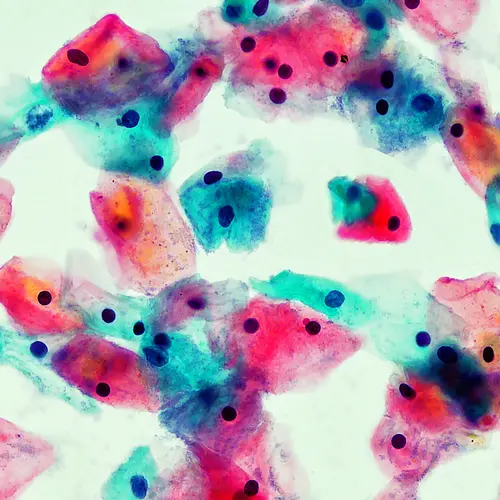This is a rare form of eye cancer that usually happens in childhood. It starts in the retina -- the part of the eye that senses light and sends pictures to the brain.
Fewer than 300 children in the U.S. are diagnosed with it each year. Usually, it's found before they turn 2.
Symptoms
The first clue and most obvious symptom is that the eye doesn’t look right. Specifically, its normally black pupil may look white. In a photo, instead of "red eye," a child with retinoblastoma will have one pupil that glows white when light shines on it.
Others symptoms include:
- An eye or eyes that appear larger than normal
- Cloudiness or discoloration in the center of the eye
- Eye pain
- Eyes that cross or look in different directions
- Redness in the white of the eye
- Vision problems
These symptoms can also be caused by less serious problems. But have a doctor check out any issues with your child’s eyes as soon as possible.
Causes
Retinoblastoma happens when there’s a change, or mutation, in one particular gene in a child’s DNA. That gene’s job is to control cell division. When it doesn’t work the way it should, cells in the retina grow out of control.
In most cases, the gene damage happens at random and occurs in just one cell. That causes a tumor in one eye.
Some children are born with the damaged gene in every cell of their body. These children are likely to have more than one tumor and to have them in both eyes. They also have a greater chance of getting other kinds of cancer. They can also pass the condition on to their own children.
Diagnosis
To diagnose this cancer, an eye doctor looks closely at the inside of the eye with a strong light and a magnifying lens. If it looks like there is cancer, the next step is to find out how big the tumor is and whether it has spread. Your child may have one of these tests:
- An ultrasound -- sound waves create pictures of your child’s eye
- An MRI (magnetic resonance imaging) -- powerful magnets and radio waves make detailed images of the eye
- A CT scan (computed tomography) -- several X-rays taken from different angles are put together to show more information
The results help doctors choose the best course of action.
Treatments
The sooner the cancer is found, the greater the chances are that your child’s eyesight can be saved. Doctors usually use a combination of treatments such as:
- Chemotherapy: Powerful drugs help shrink the tumor ahead of other treatments. If the cancer hasn’t spread, the drugs may be injected directly into the eye or into the blood vessels that lead to it. If the cancer is likely to spread or has already spread, your child will probably take the medications by mouth or through a vein so they can work throughout the body.
- Cryotherapy: A touch with a super-cooled metal probe freezes and kills cancer cells. This works best on small tumors near the front of the eye.
- Thermotherapy: A special laser kills cancer cells with heat. Doctors use it by itself on small tumors or along with other treatments for larger tumors.
- Laser Therapy: A different kind of laser targets and destroys the blood vessels that supply the tumor. This works for small tumors in the back of the eye.
- Radiation: There are two kinds of radiation therapy. For small tumors, a surgeon can sew a disc that has radioactive material inside it onto the eyeball near the tumor. Your child stays in the hospital a few days while it works, and then the disc is removed. Older technology uses a machine to focus beams of radiation on the tumor. This usually is used only if other strategies don’t work.
- Surgery: If the tumor is very large by the time it’s found, it may not be possible to save the child’s vision. In these cases, the eye may be removed.
It’s nearly impossible for a small child to keep still long enough for a thorough exam, much less when something is being done to the child's eye. Very young patients usually are sedated or put under for exams and treatments.
What to Expect
Retinoblastoma is almost always curable, especially if it hasn’t spread beyond the eye.
Children treated for retinoblastoma need very close follow-up care. Your child will have frequent checkups to watch for signs that the cancer has come back.
Frequent checkups are important for other reasons, too. Children who have a damaged gene in every cell can get other types of cancer later in life because the gene doesn’t help stop the cancers the way a healthy gene would. And children who have radiation or chemotherapy treatment are also more likely to have cancer again.
Most of the cancers caused in these ways are treatable if they’re found early.
Doctors recommend genetic tests to see if your child has the kind of gene damage that can be passed down. Parents and siblings should be tested as well.

